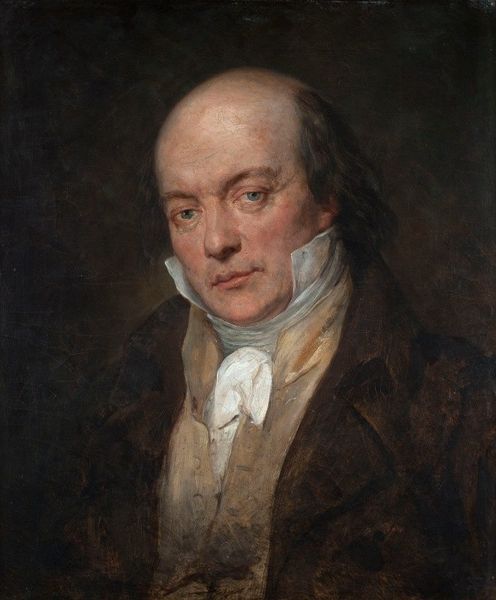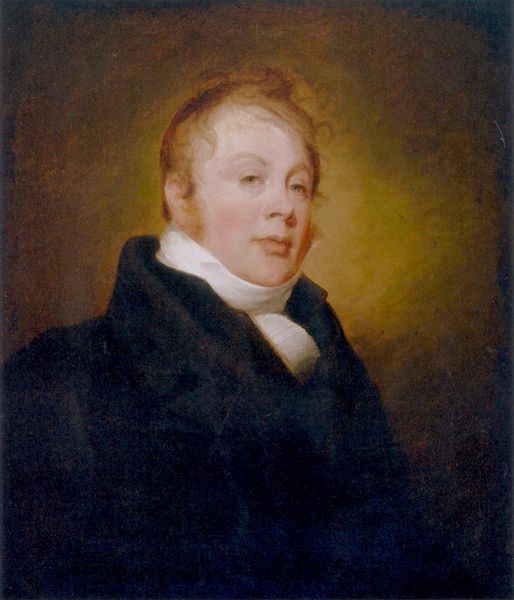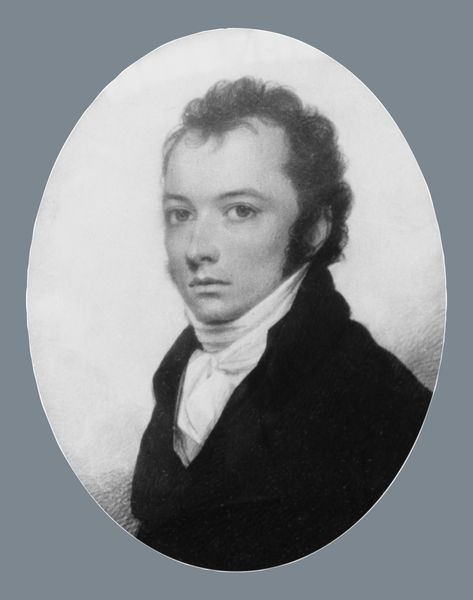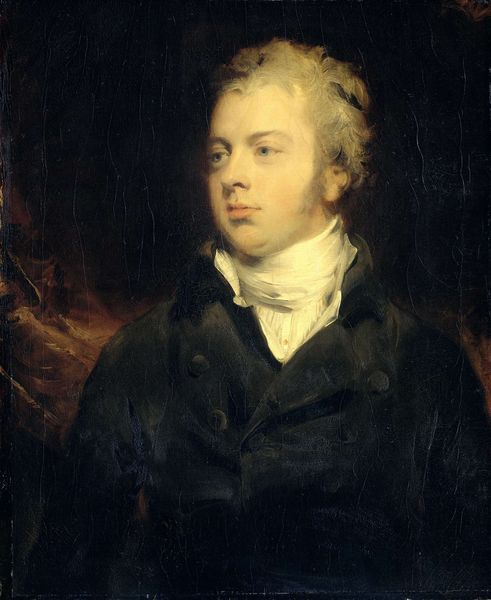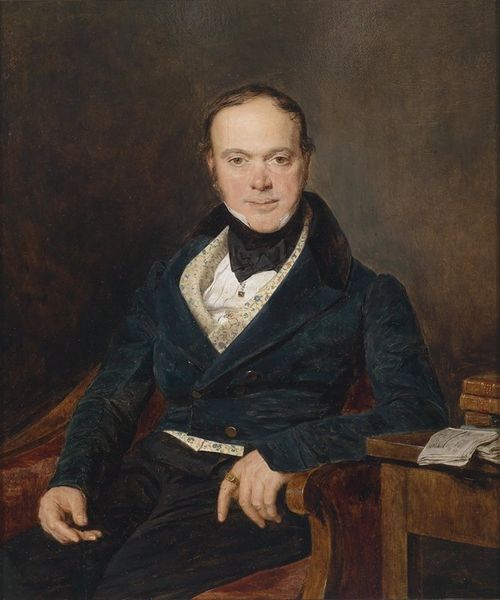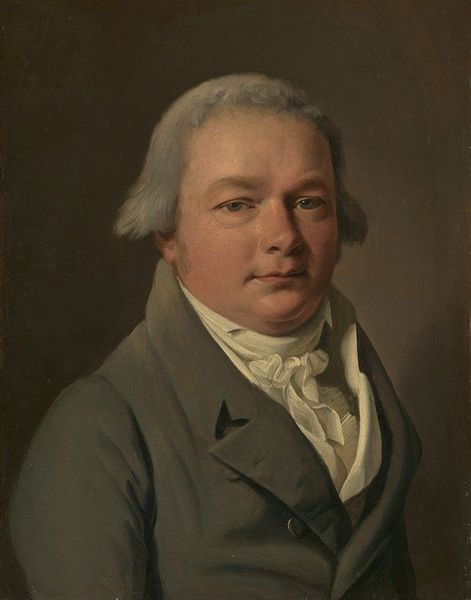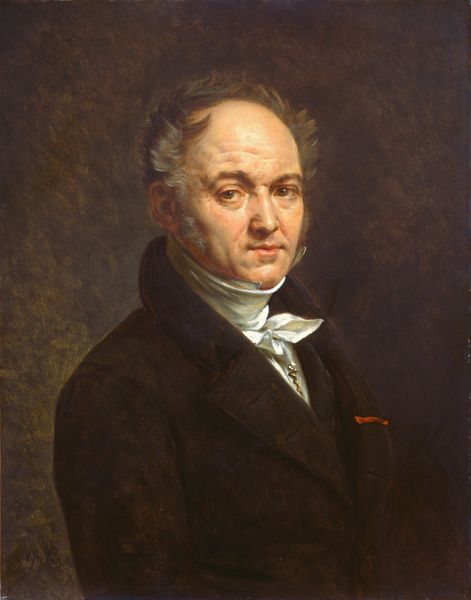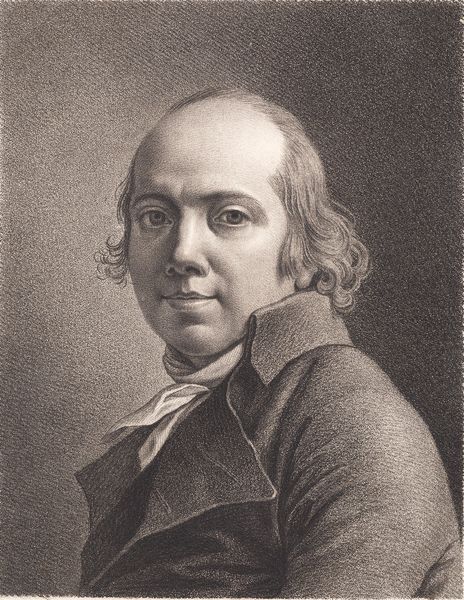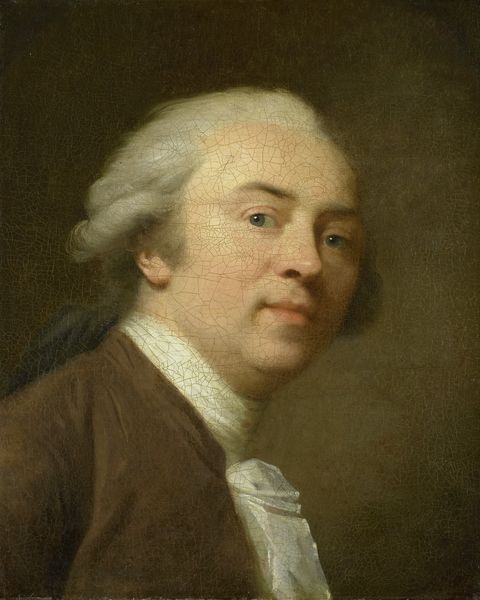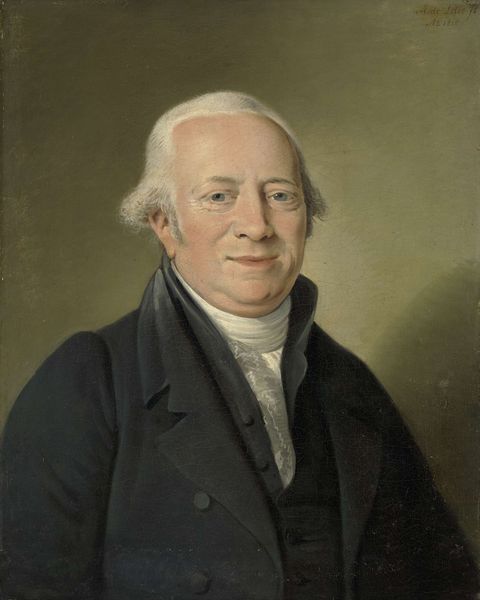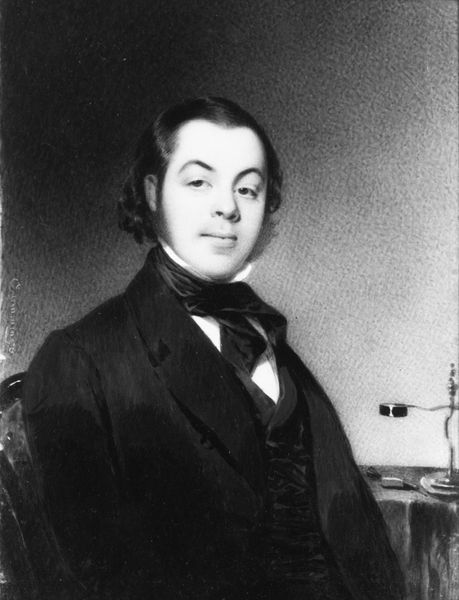
painting
#
portrait
#
portrait image
#
portrait
#
painting
#
figuration
#
portrait reference
#
portrait head and shoulder
#
romanticism
#
portrait drawing
#
facial portrait
#
portrait art
#
fine art portrait
#
celebrity portrait
#
digital portrait
Copyright: Public domain
Curator: The somber mood strikes me first. A kind of restrained power, wouldn't you say? Editor: Indeed. Here we have Orest Kiprensky’s "Portrait of Feodor Rostopchin," executed in 1809. What stands out to me is the clear structural emphasis; notice how Kiprensky's composition builds around a triangular structure, lending the figure both stability and a sense of forward momentum. Curator: Rostopchin himself was quite the figure, the Governor-General of Moscow during Napoleon's invasion. Do you see a certain fire, perhaps concealed, in his gaze? His name is tied to the controversial decision to burn Moscow, a sacrifice to deny Napoleon victory. Editor: Symbolically, black attire carries funereal implications, or at least gravitas. His gaze doesn't necessarily carry overt malice or any obvious moral symbol; it suggests intellectual focus and detachment. We see this reinforced in the geometric starkness that contrasts so well with what would otherwise be a simple representation. Curator: Yet, the soft rendering of his face humanizes him. The tightly knotted cravat speaks of formality, but the unbuttoned coat hints at the weight of responsibilities borne. It creates tension between duty and humanity. Editor: Agreed, and this creates a dialectic tension that animates the entire composition. Take also how the chair's simple vertical lines paradoxically act to stabilize Rostopchin’s otherwise mobile and ephemeral visage, thus generating new readings of his station. It’s a fantastic visual effect. Curator: Considering the historical context, is he presented as a man of the people, resolute and unyielding? The chair he sits upon seems rather plain for someone of his stature. Editor: One can only surmise the artist’s and sitter’s intentions, though any interpretation hinges upon the interplay between material elements, structural relationships, and representational norms—as evidenced by its compositional clarity. Curator: Precisely. Rostopchin becomes not just an individual, but also embodies the spirit of Russia’s resilience. Editor: Agreed. Thinking now about the semiotics, Kiprensky compels viewers to re-evaluate the intersections of line, tone, and symbolism in relation to historical narrative, doesn't he? Curator: Indeed. And on that note, it is worth further contemplation on this brilliant Kiprensky artwork. Editor: An astute summation indeed.
Comments
No comments
Be the first to comment and join the conversation on the ultimate creative platform.
